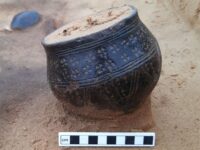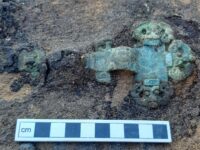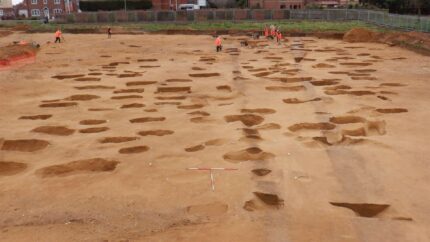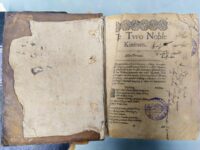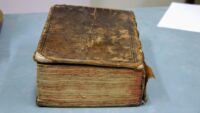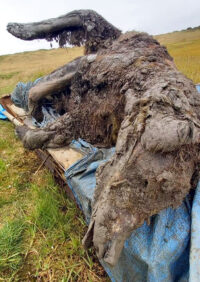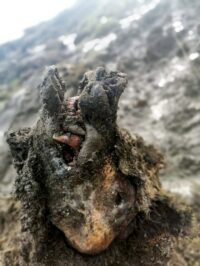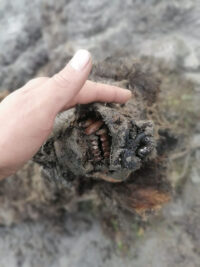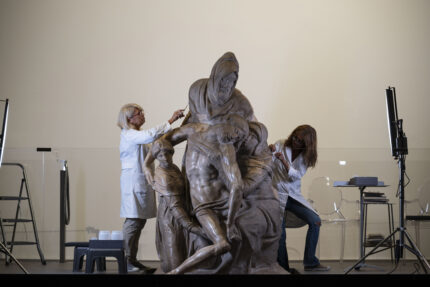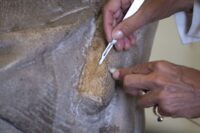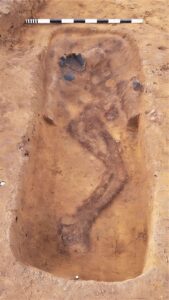 Archaeologists have discovered an Anglo-Saxon cemetery from as early as the 6th century at Oulton, near Lowestoft on the English North Sea coast of East Suffolk. The remains of 208 individuals were unearthed at the site of a future housing development. The rare phenomenon of sand silhouettes — dark impressions of skeletons left in the soil — was found in the inhumation graves.
Archaeologists have discovered an Anglo-Saxon cemetery from as early as the 6th century at Oulton, near Lowestoft on the English North Sea coast of East Suffolk. The remains of 208 individuals were unearthed at the site of a future housing development. The rare phenomenon of sand silhouettes — dark impressions of skeletons left in the soil — was found in the inhumation graves.
Andrew Peachey of Archaeological Solutions Ltd, who carried out the excavations, said:
“Our archaeologists painstakingly excavated the delicate remains of 17 cremations and 191 inhumation burials. Due to the highly acidic soil the skeletons had mostly vanished and were luckily preserved as fragile shapes and shadows in the sand. These shadows also revealed traces of the wooden coffins that some of the individuals were buried in.
“Unusually, many graves also included fragments of pottery and in some cases complete decorated pots. Weapons were rare, with a sword in one grave, iron spear heads in three others, and at least one shield – the metal fittings of the shield remained in place around the silhouette of the dissolved wooden boards. Many of the artefacts were so fragile they had to be block lifted for micro-excavation in the labs at Norfolk Museum Service for analysis and conservation – they were even able to recover pieces of textiles and leather.”
 The cemetery appears to have been used by a local farming community. The graves include adult male and female, child and infant burials from several generations. Evidence of the transition from paganism to Christianity is seen in the grave goods. For example pottery is found in several of the older pre-Christian graves, while a later cruciform brooch was unearthed in the grave of an adult woman.
The cemetery appears to have been used by a local farming community. The graves include adult male and female, child and infant burials from several generations. Evidence of the transition from paganism to Christianity is seen in the grave goods. For example pottery is found in several of the older pre-Christian graves, while a later cruciform brooch was unearthed in the grave of an adult woman.
The archaeological materials and remains have been recovered and the site fully documented. Construction will go forward as planned. The finds will be studied further in laboratory conditions.
